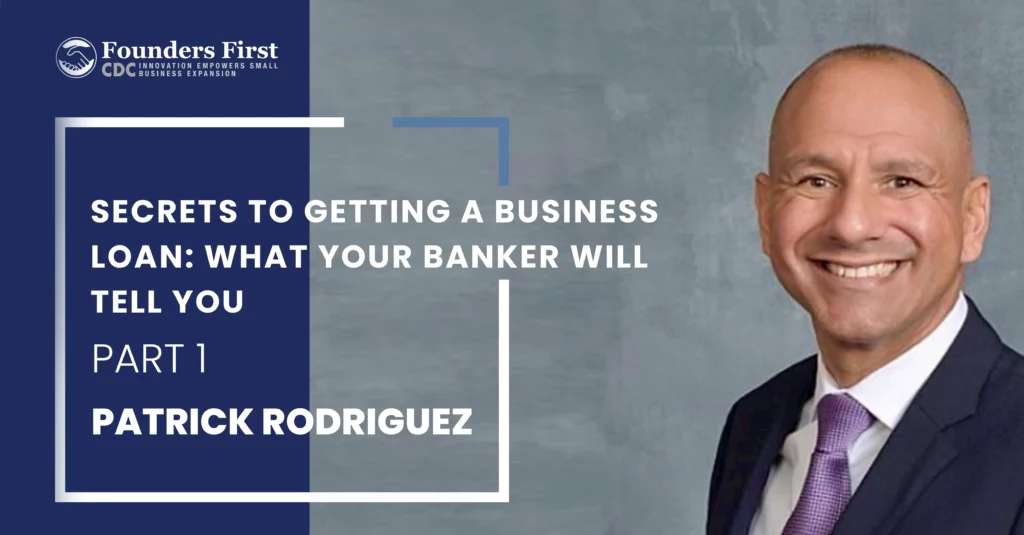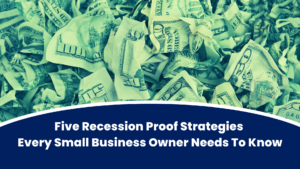Ever wonder how a bank makes a decision to give your business a loan or not? A bank VP discloses all the secrets.
By Patrick Rodriguez
Special thanks to guest blogger, Vice President of Citizens Bank Patrick Rodriguez, who told us how banks really make loan decisions during our recent webinar.
There’s two things that customers and business owners have to understand when it comes to
banks. Number one is we look at numbers. Numbers are important. Numbers are important
historically to tell us what you’re looking to do going forward into the future. They help us
determine the credit worthiness of borrowers and how much we lend. However, how you do it
and why you do it are just as important, which is why I want to talk about the five C’s of lending.
Character
The first is character. Not only the character of the business owner, but the character of the
business itself. When we look at a customer’s credit history, it tells us a lot about you – not only
the business credit, but your personal credit. We look at what you’ve done to stay credit worthy.
We look at what you’ve done with previous lenders. We also look to see if there’s a story behind
what your credit says to us as a bank. We look back at three years in business and historical
profitability. And of course we look at your Profit & Loss statement to see if you’re making
money. Then, we determine how it relates to what kind of business owner you are.
Importantly, with character, you can’t do everything yourself all the time. I have dealt with clients and business owners that have been very successful. However, they are doing it all by
themselves. When we look at lending, we look at what would happen to the business if
something happened to the business owner. Not only are we lending to the individual as a
guarantor, we’re really buying into the business and what happens to that business if something were to happen to the business owner.
So, having an engaged management team is huge. We ask for that. We want to know who your
support team is, who your sales manager is, who’s driving business for you. If you’re
manufacturing something, who’s in charge of that aspect of the business? If it’s a service, who
runs that? Operationally, we want to know who is doing the day-to-day administrative work.
Who’s doing customer service?
And then we want to see how you as the CEO or owner are holistically driving all those aspects
of your business, and keeping day-to-day operations running while you move the business
forward.
Capacity
Well, if we lend you money, we’re hoping you’re going to pay us back. So, we need to know
your capacity, or your ability, to repay.
What is your financial situation? Having a clean P&L and clean balance sheet is important. We
need to figure out what that picture is. It’s a picture you should be able to paint for us as a bank.
Now, depending on the year, depending on the business cycle, in some cases, some of these
pictures aren’t necessarily a true assessment and we have to look closely at that. We do the
math, we crunch numbers to try to get the best view of your business possible.
We look at a debt ratio when it comes to lending. We need to know how your income on your
P&L allows you to service the debt on your balance sheet. We look at 1.25 as a minimum debt
service. So, for every $1.00 in annual debt payments, you need to make approximately $1.25 in
profit.
Capital
Capital is derived directly from the balance sheet. You can make a tremendous amount of
money, but if your balance sheet shows that every penny is going somewhere else, either in
debt or you have no liquidity, we are going to ask a lot of questions to figure out what is going
on. When you make that money, what is happening? Where is it going after you make it? There are a lot of questions when we look at capital and liquidity. If we’re doing a loan, what
will it do for your liquidity? Will it fund your operations? Will it be replenished after your business cycle ends? How often is that happening?
The balance sheet and your capital are key components for us to understand how money is
being used and how it’s being cycled through your business.
In Part 2, we’ll cover the final two C’s of lending and talk about how to tell your story to a bank to get funding.




